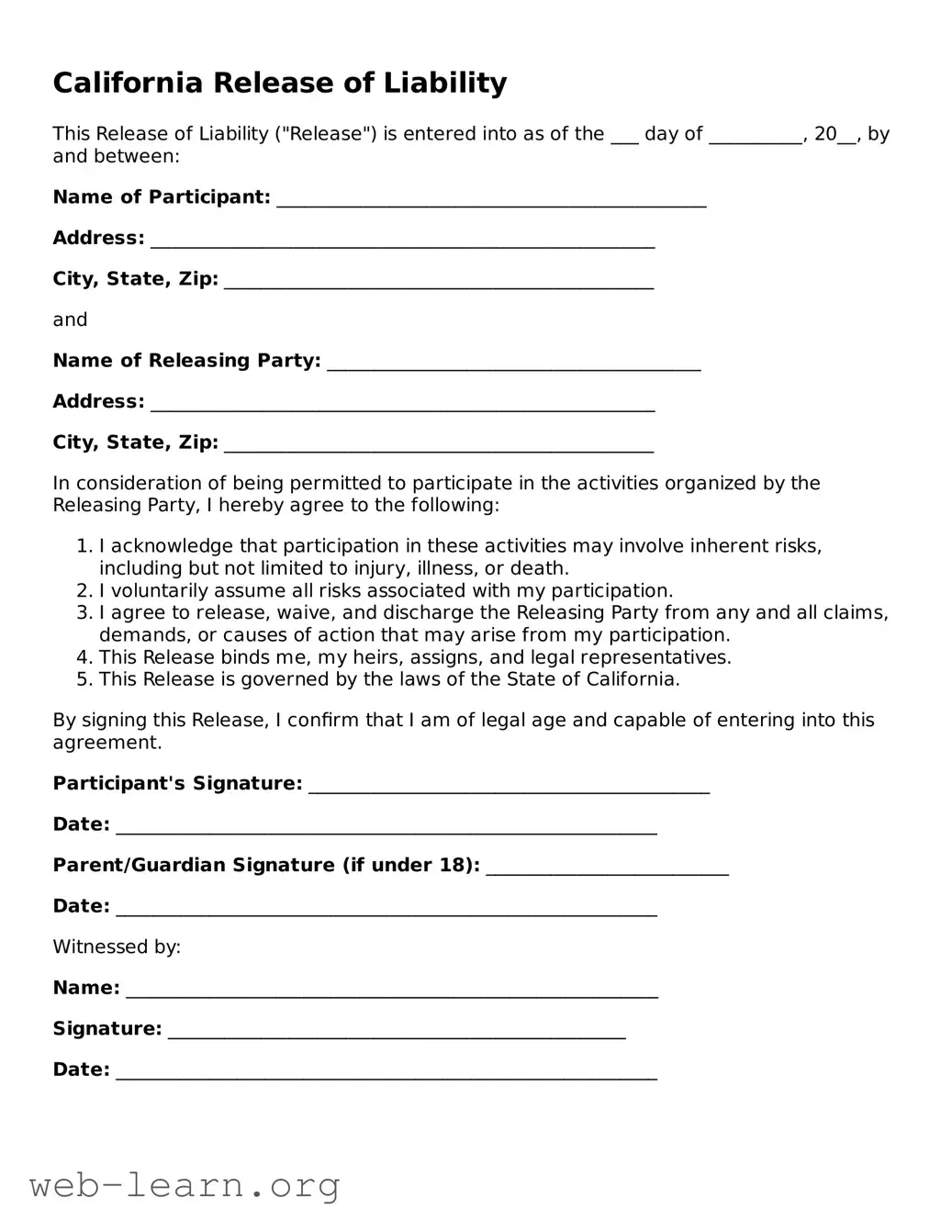California Release of Liability
This Release of Liability ("Release") is entered into as of the ___ day of __________, 20__, by and between:
Name of Participant: ______________________________________________
Address: ______________________________________________________
City, State, Zip: ______________________________________________
and
Name of Releasing Party: ________________________________________
Address: ______________________________________________________
City, State, Zip: ______________________________________________
In consideration of being permitted to participate in the activities organized by the Releasing Party, I hereby agree to the following:
- I acknowledge that participation in these activities may involve inherent risks, including but not limited to injury, illness, or death.
- I voluntarily assume all risks associated with my participation.
- I agree to release, waive, and discharge the Releasing Party from any and all claims, demands, or causes of action that may arise from my participation.
- This Release binds me, my heirs, assigns, and legal representatives.
- This Release is governed by the laws of the State of California.
By signing this Release, I confirm that I am of legal age and capable of entering into this agreement.
Participant's Signature: ___________________________________________
Date: __________________________________________________________
Parent/Guardian Signature (if under 18): __________________________
Date: __________________________________________________________
Witnessed by:
Name: _________________________________________________________
Signature: _________________________________________________
Date: __________________________________________________________
